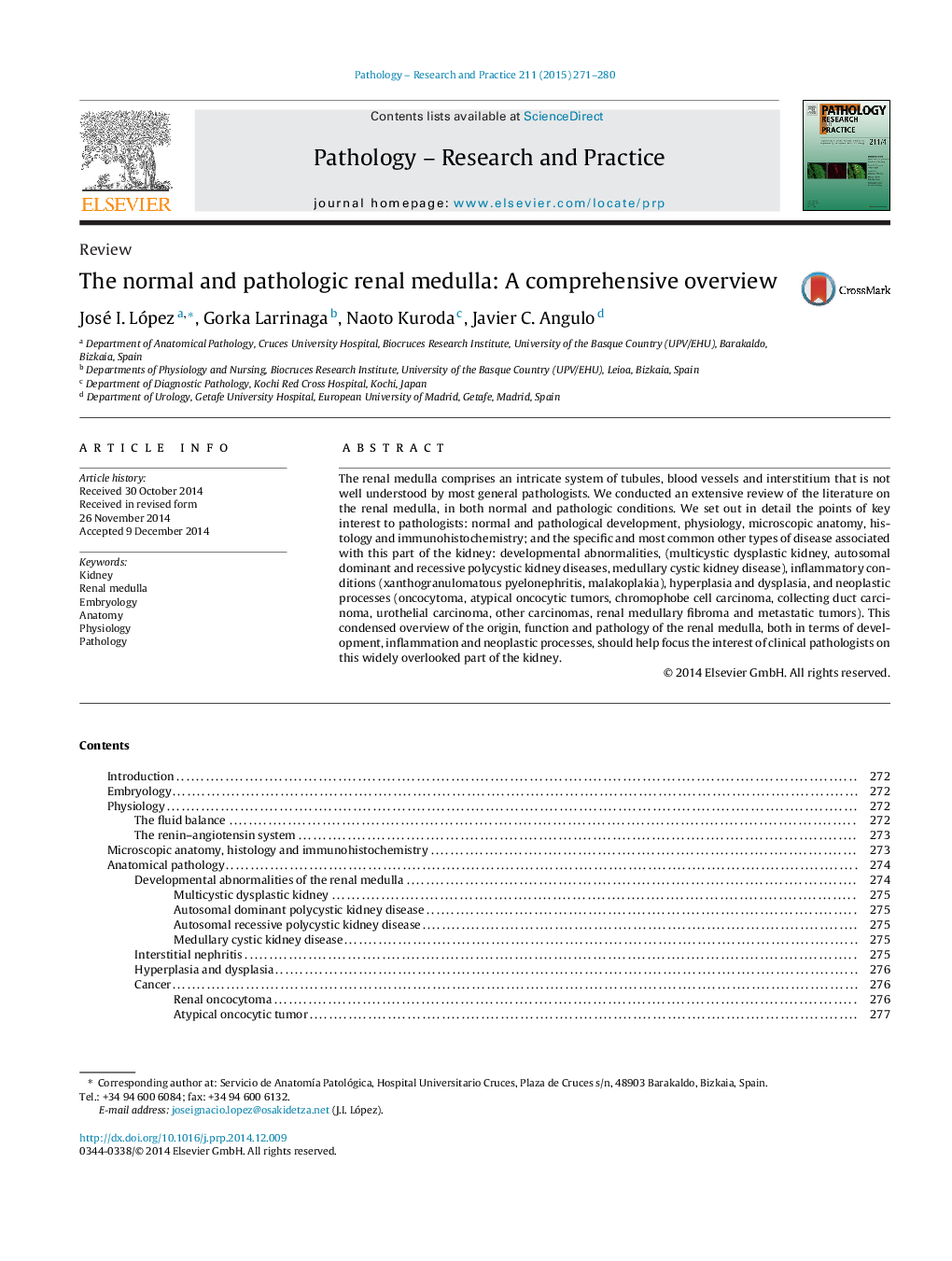| Article ID | Journal | Published Year | Pages | File Type |
|---|---|---|---|---|
| 2155275 | Pathology - Research and Practice | 2015 | 10 Pages |
The renal medulla comprises an intricate system of tubules, blood vessels and interstitium that is not well understood by most general pathologists. We conducted an extensive review of the literature on the renal medulla, in both normal and pathologic conditions. We set out in detail the points of key interest to pathologists: normal and pathological development, physiology, microscopic anatomy, histology and immunohistochemistry; and the specific and most common other types of disease associated with this part of the kidney: developmental abnormalities, (multicystic dysplastic kidney, autosomal dominant and recessive polycystic kidney diseases, medullary cystic kidney disease), inflammatory conditions (xanthogranulomatous pyelonephritis, malakoplakia), hyperplasia and dysplasia, and neoplastic processes (oncocytoma, atypical oncocytic tumors, chromophobe cell carcinoma, collecting duct carcinoma, urothelial carcinoma, other carcinomas, renal medullary fibroma and metastatic tumors). This condensed overview of the origin, function and pathology of the renal medulla, both in terms of development, inflammation and neoplastic processes, should help focus the interest of clinical pathologists on this widely overlooked part of the kidney.
